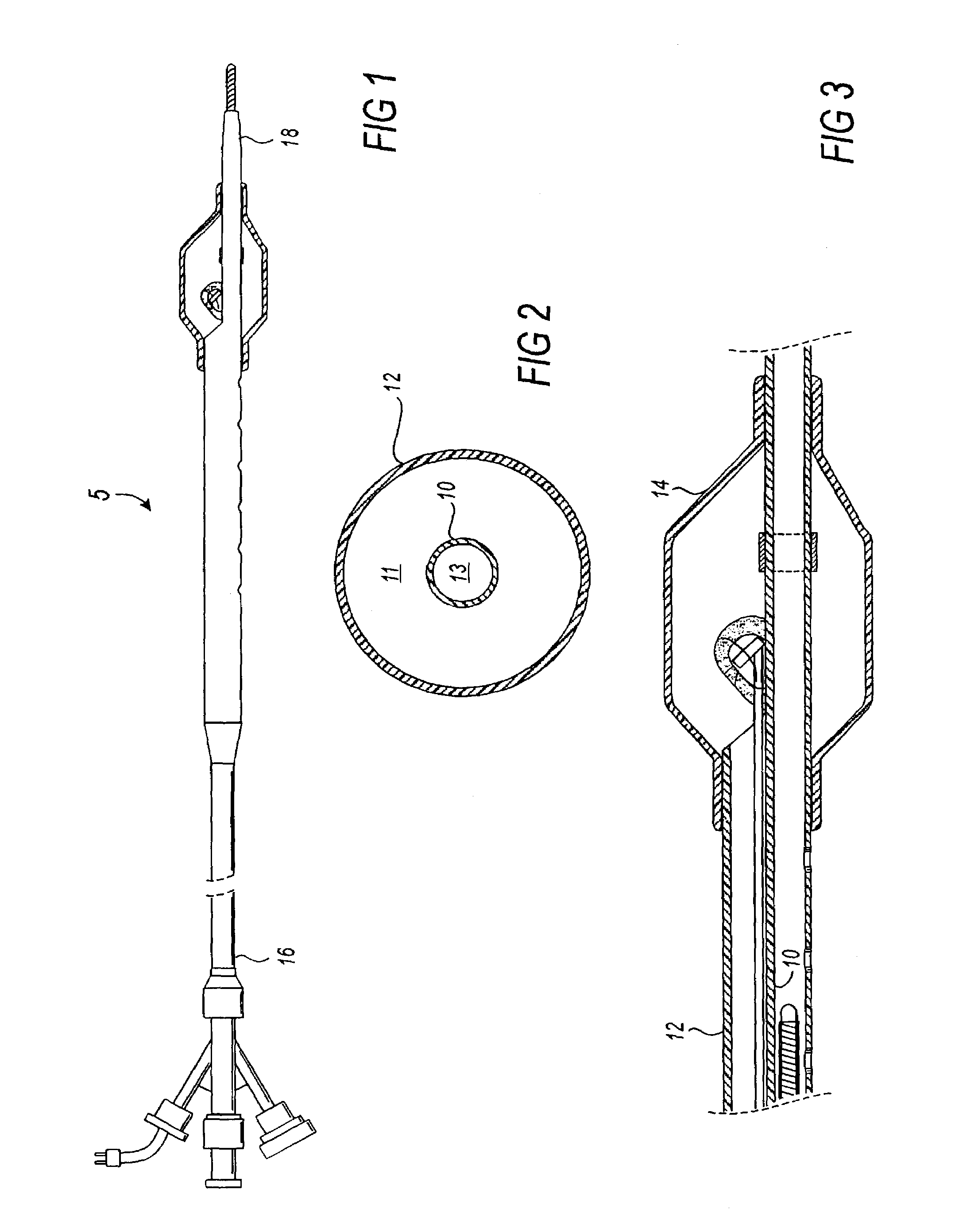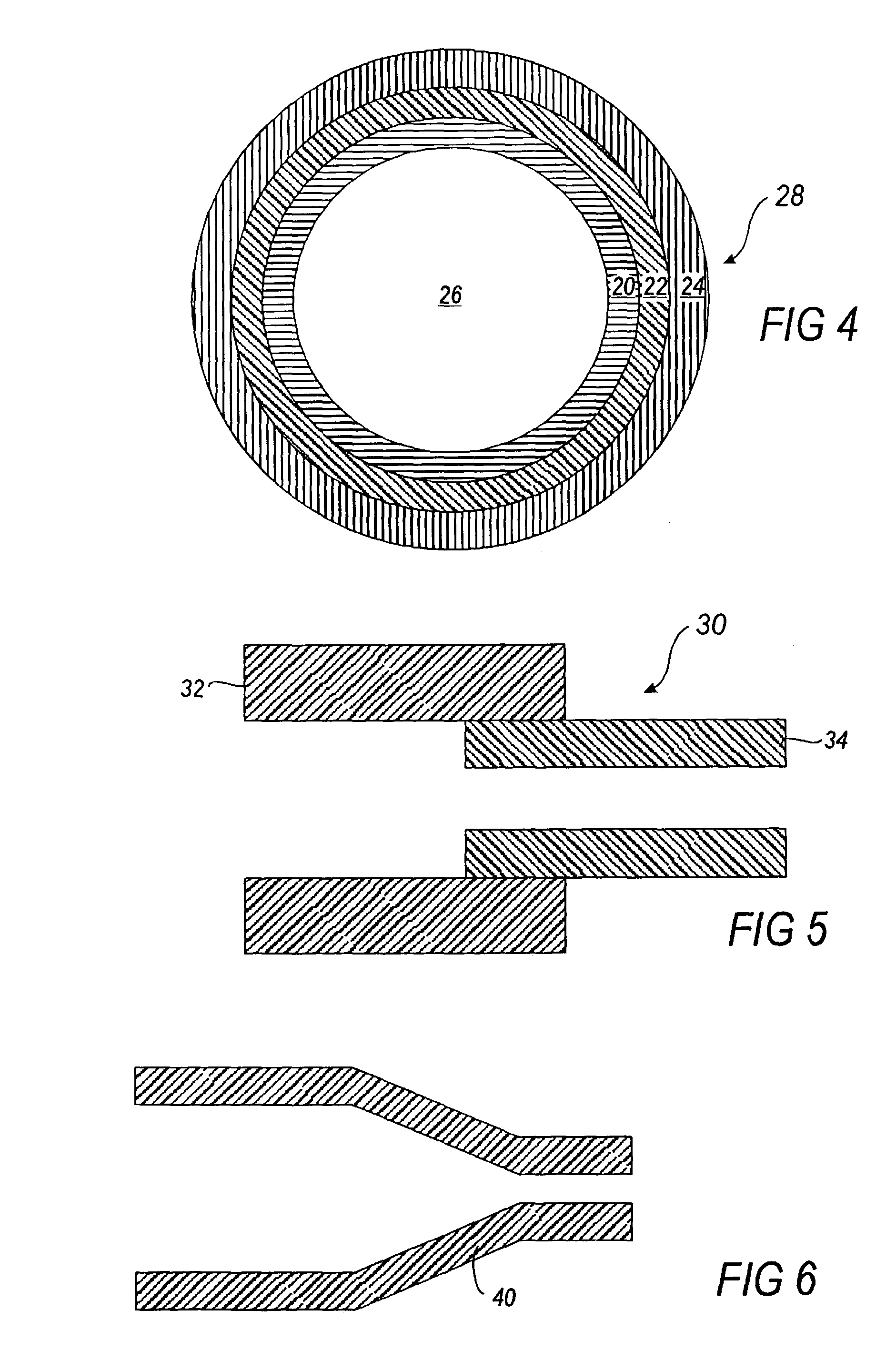Co-extruded taper shaft
a co-extruded, tubular shaft technology, applied in the direction of catheters, other domestic objects, transportation and packaging, etc., can solve the problems of difficult difficult use of standard catheters with relatively constant diameters, and complicated material selection for each of the various catheter components
- Summary
- Abstract
- Description
- Claims
- Application Information
AI Technical Summary
Problems solved by technology
Method used
Image
Examples
second embodiment
[0045]The embodiment of the present invention discussed above describes the formation of a multi-layer tapered shaft 50 through the use of a co-extrusion tapering process. The resulting multi-layer tapered shaft may then be further modified through post-process necking. The added necking process makes the tapered shaft more pressure resistant and stiffer. Further, it is possible to achieve a higher tolerance with necking. The tighter necking control is possible since the necking of the shaft is being done on a metal core and through a tight tolerance die. Thus, the invention may consist of tapering a co-extruded multi-layer shaft with a co-extruder system and a taper puller to approximately ¾ of the desired dimension and then necking down to the final desired dimension. This combination of co-extrusion tapering and neck tapering provides finer control over both the dimensions and the stiffness of the tapered shaft. For example, if neck tapering is performed for the entire taper, the...
third embodiment
[0048]the present invention involves tapering a shaft consisting of a variable transition between a first material and a second material. FIG. 10 provides a side cross-sectional view of tapered shaft 80 having a variable transition between materials A and B. Note that the transition between materials may be relatively quick and immediate or may have a longer transitional segment C (as illustrated) that consists of a combination or composite of materials A and B.
[0049]A shaft 80 having a variable transition may be formed by an extrusion tapering process using the same taper puller described above. Rather than the first and second materials being tapered and extruded together to form a shaft having multi-layers, this embodiment involves concurrently tapering and extruding a shaft formed by extruding a first material and then a second material to form a single variable layer tubular shaft 80. Note, that a variable transition layer may also be used as one of several layers in a multi-la...
PUM
| Property | Measurement | Unit |
|---|---|---|
| Length | aaaaa | aaaaa |
| Thickness | aaaaa | aaaaa |
| Pressure | aaaaa | aaaaa |
Abstract
Description
Claims
Application Information
 Login to View More
Login to View More - R&D
- Intellectual Property
- Life Sciences
- Materials
- Tech Scout
- Unparalleled Data Quality
- Higher Quality Content
- 60% Fewer Hallucinations
Browse by: Latest US Patents, China's latest patents, Technical Efficacy Thesaurus, Application Domain, Technology Topic, Popular Technical Reports.
© 2025 PatSnap. All rights reserved.Legal|Privacy policy|Modern Slavery Act Transparency Statement|Sitemap|About US| Contact US: help@patsnap.com



